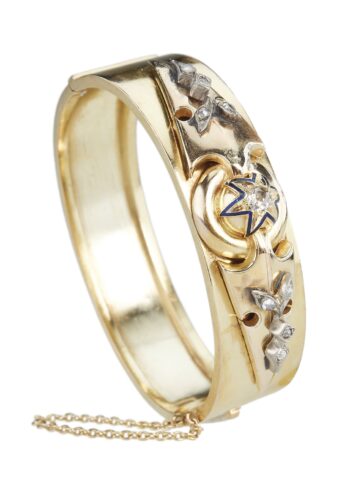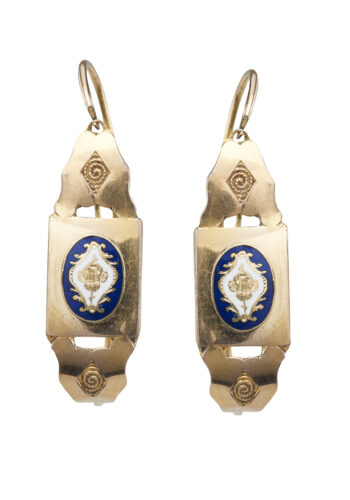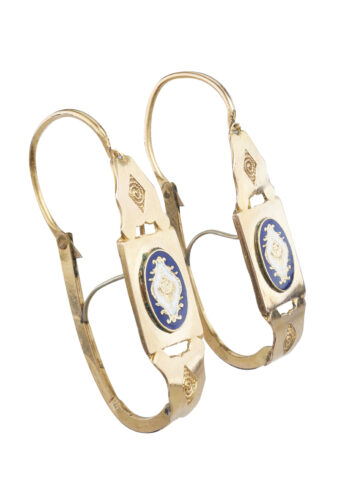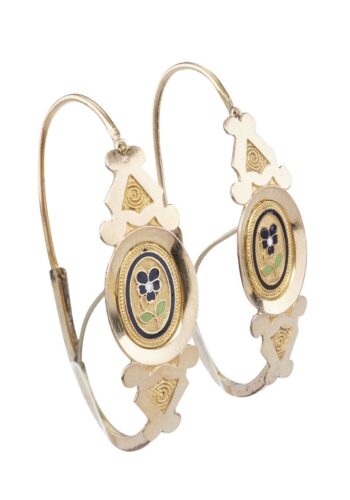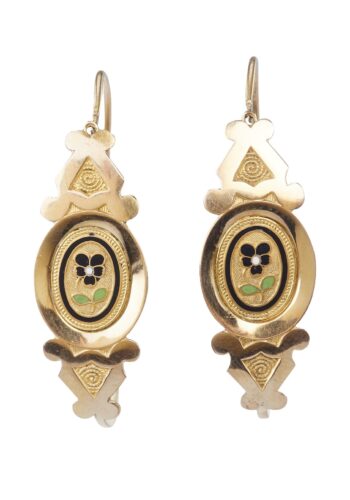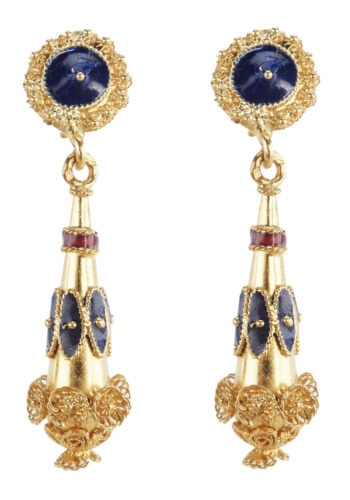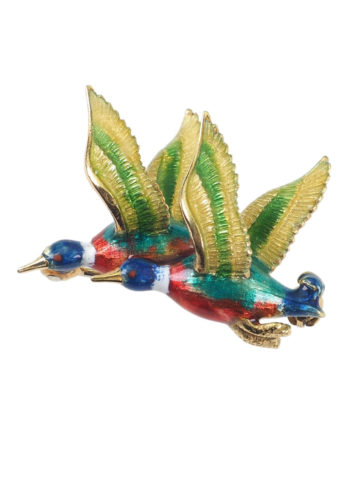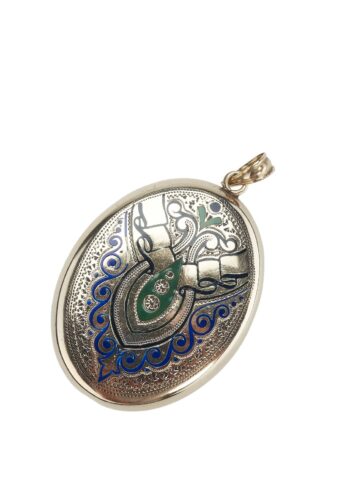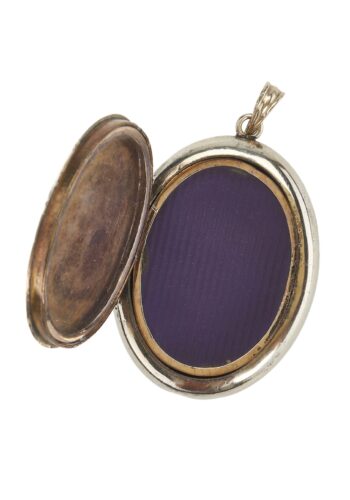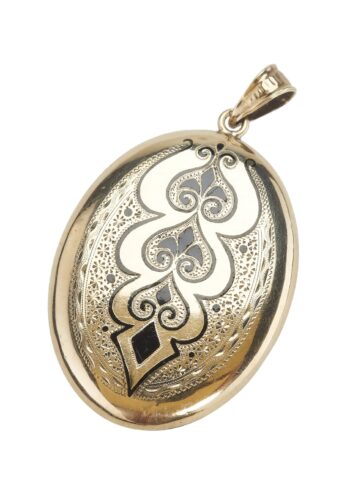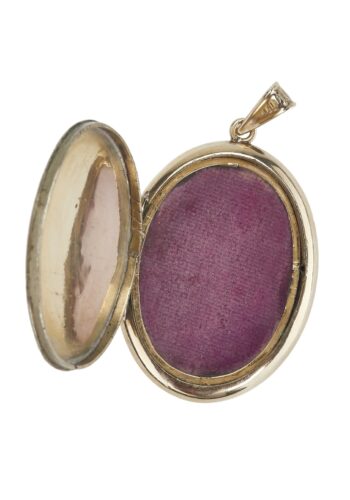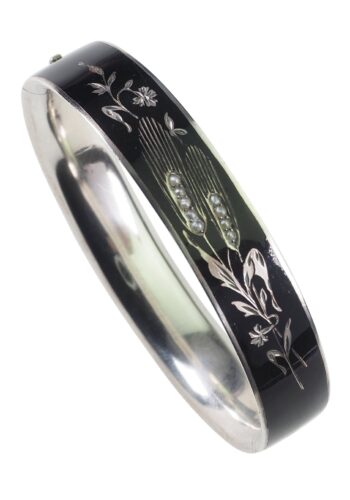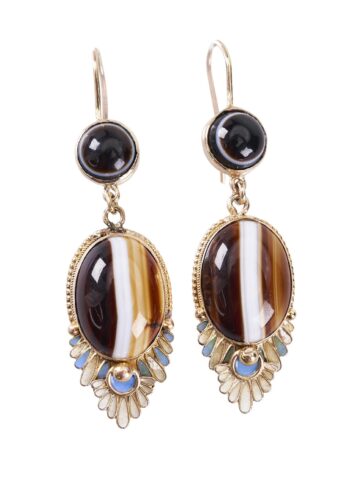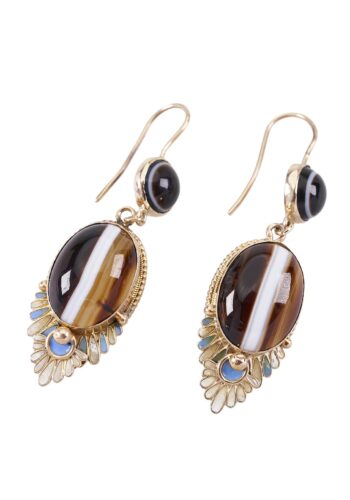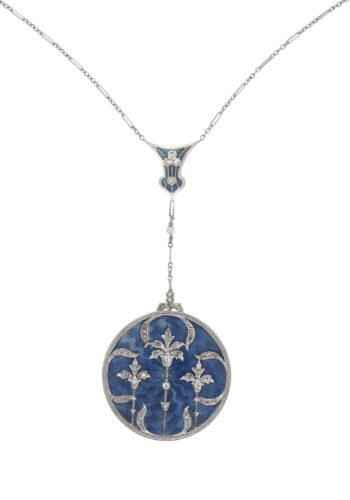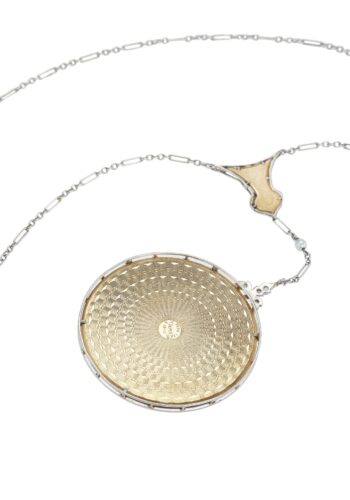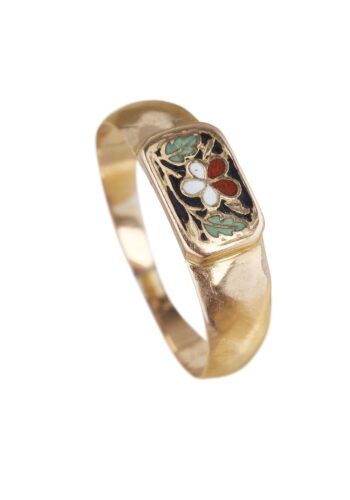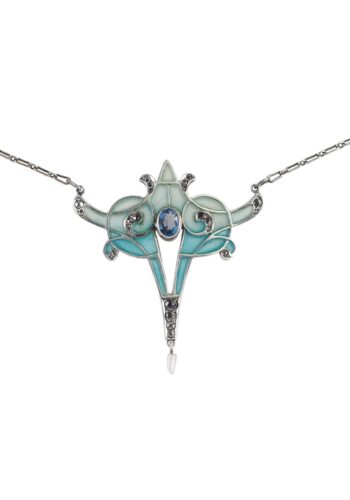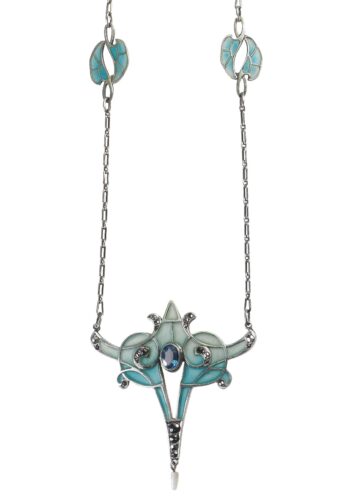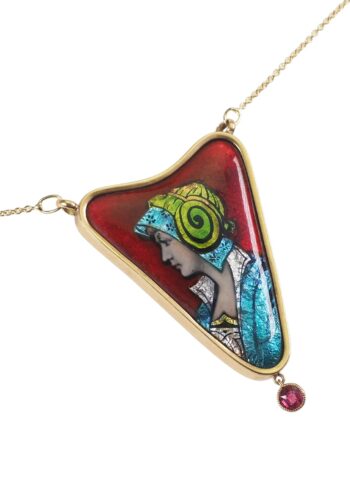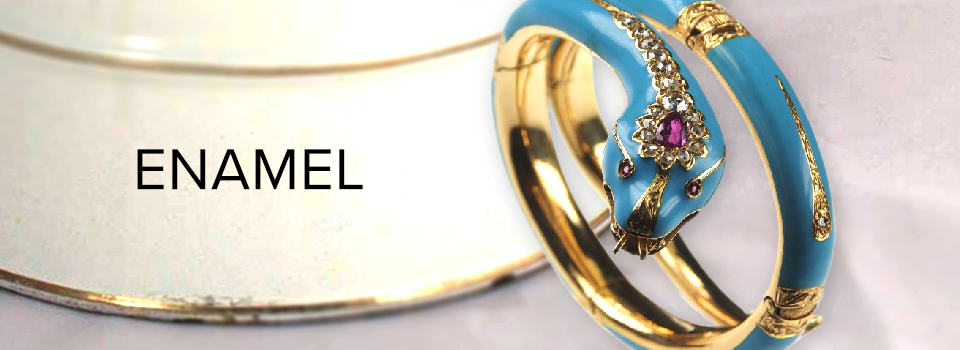
Enamel
Enamel is a part of our everyday life in so many omnipresent things. Signs, pots, dials and a lot more are enamelled, which means covered with enamel. The practical quality, which means surface-protecting quality, of enamel for the everyday device is used only since the 19th century on a large scale. However, a long time before it and still enamel works are a highly respected art in the jewellery production!! The alternative expression 'glass flux' explains nearly in one word the basic quality of enamel.
A mixture from inorganic and glass producing substances, like silicates and oxides, is put, by immersing or spraying, on the object to be enamelled. Then this layer is branded at 850 to 900 °C. In the process the enamel layer melts to a glass cover. Afterwards this process can be repeated several times to work out the desired thickness, different colours or decorative element. There are different techniques in the production of jewellery enamel, which were partly used already 1000 years ago. As can be proved the Byzantine empress Theophanu already promoted this first blossoming of enamel art. The ‚Pala D’Oro” in the Markus’s cathedral in Venice serves art historians as an important reference for this technique. Spreading from the French Limoges the arts of the enamel treatment set up till the 20th century in particular in Germany, Belgium and France. The antique email jewellery experienced its most creative and most popular time during the art nouveau. Around the turn of the century exuberant highly imaginative necklaces, brooches and earrings originated in the ’new art”of France and Germany. There were and are no borders in the creation of fantasy.
Click to fold
A mixture from inorganic and glass producing substances, like silicates and oxides, is put, by immersing or spraying, on the object to be enamelled. Then this layer is branded at 850 to 900 °C. In the process the enamel layer melts to a glass cover. Afterwards this process can be repeated several times to work out the desired thickness, different colours or decorative element. There are different techniques in the production of jewellery enamel, which were partly used already 1000 years ago. As can be proved the Byzantine empress Theophanu already promoted this first blossoming of enamel art. The ‚Pala D’Oro” in the Markus’s cathedral in Venice serves art historians as an important reference for this technique. Spreading from the French Limoges the arts of the enamel treatment set up till the 20th century in particular in Germany, Belgium and France. The antique email jewellery experienced its most creative and most popular time during the art nouveau. Around the turn of the century exuberant highly imaginative necklaces, brooches and earrings originated in the ’new art”of France and Germany. There were and are no borders in the creation of fantasy.
Click to fold
-
Ca. 1880 – 15 ct. Gold Victorian Bangle with Diamonds & Enamel decorations, crafted in England
€ 2.700,00
differential tax applies collectors items and antiques in accordance with German law §25a UStGFree Shipping -
Ca. 1820 – “Poissardes” Gold-plated Earrings with Enamel work, French
€ 1.290,00
differential tax applies collectors items and antiques in accordance with German law §25a UStGFree Shipping -
Ca. 1820 – “Poissardes” French Earrings with Enamel decorations
€ 1.690,00
differential tax applies collectors items and antiques in accordance with German law §25a UStGFree Shipping -
Ca. 1830 – Filigree Earrings with Enamel, Georgian
€ 1.790,00
differential tax applies collectors items and antiques in accordance with German law §25a UStGFree Shipping -
Ca. 1910 – Guilloché Gold & Enamel Cufflinks
€ 690,00
differential tax applies collectors items and antiques in accordance with German law §25a UStGFree Shipping -
Ca. 1950 – Animal motif Brooch made of 18 Carat Gold & Enamel
€ 1.100,00
differential tax applies collectors items and antiques in accordance with German law §25a UStGFree Shipping -
Circa 1870 – Gold & Enamel Medallion ‘AMISTAD’
€ 790,00
differential tax applies collectors items and antiques in accordance with German law §25a UStGFree Shipping -
Ca. 1870 – Gold Locket with Enamel, Germany
€ 690,00
differential tax applies collectors items and antiques in accordance with German law §25a UStGFree Shipping -
Ca. 1900 – “St Joseph with Baby Jesus” Pendant with Gold Chain
€ 990,00
differential tax applies collectors items and antiques in accordance with German law §25a UStGFree Shipping -
Ca. 1860 – Enamel, Silver & Pearl Bangle
€ 790,00
differential tax applies collectors items and antiques in accordance with German law §25a UStGFree Shipping -
Ca. 1870 – 18ct Gold Earrings with Enamel, Epoch Napoléon III.
€ 2.300,00
differential tax applies collectors items and antiques in accordance with German law §25a UStGFree Shipping -
Ca. 1950 – Enamel-Bracelet by Ivar T. Holth, Oslo
€ 690,00
differential tax applies collectors items and antiques in accordance with German law §25a UStGFree Shipping -
Ca. 1860 – Enamel & Silver Bangle from Austro-Hungarian
€ 490,00
differential tax applies collectors items and antiques in accordance with German law §25a UStGFree Shipping -
Ca. 1880 – Sardonyx, Enamel & Gold, Victorian English Earrings
€ 1.990,00
differential tax applies collectors items and antiques in accordance with German law §25a UStGFree Shipping -
Ca. 1910 – Platinum, Gold, Enamel & Diamond Art Nouveau Necklace
€ 9.800,00
differential tax applies collectors items and antiques in accordance with German law §25a UStGFree Shipping -
Ca. 1820 – Goldring with enamel, Louis Philippe, France
€ 1.290,00
differential tax applies collectors items and antiques in accordance with German law §25a UStGFree Shipping -
Ca. 1950 – Sterlingsilver Medallion / Engine turned Surfaces
€ 290,00
differential tax applies collectors items and antiques in accordance with German law §25a UStGFree Shipping -
Ca. 1930 – Butterfly Enamel Brooch, English Sterlingsilver
€ 490,00
differential tax applies collectors items and antiques in accordance with German law §25a UStGFree Shipping -
Ca. 1920 – Art Deco Cufflinks & Tails Set in Original box
€ 1.490,00
differential tax applies collectors items and antiques in accordance with German law §25a UStGFree Shipping -
Ca. 1900 – “Grapevine” Tie Pin Gold, Enamel & Pearl
€ 290,00
differential tax applies collectors items and antiques in accordance with German law §25a UStGFree Shipping -
Ca. 1900 – Plique-à-jour Jugenstil Necklace by Déposé Levinger
€ 2.900,00
differential tax applies collectors items and antiques in accordance with German law §25a UStGFree Shipping -
Ca. 1880 – Sterling Silver & Enamel Earrings, Victorian
€ 990,00
differential tax applies collectors items and antiques in accordance with German law §25a UStGFree Shipping -
Ca. 1910 – Gold & Silver Brooch “Jockey”
€ 1.190,00
differential tax applies collectors items and antiques in accordance with German law §25a UStGFree Shipping -
Ca. 1910 – Limoges Enamel Pendant with Chain, Camille Fauré
€ 1.990,00
differential tax applies collectors items and antiques in accordance with German law §25a UStGFree Shipping




